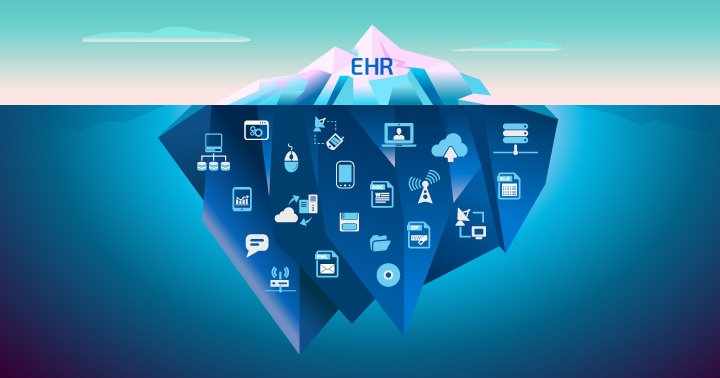How many of us actually know about healthcare technology? What is the modern healthcare science? What are the new inventions to prevent diseases? Are we all aware of it? Is healthcare only mean about physical? Let’s have a look what are healthcare and its technology about.
What is Healthcare?

Healthcare is the act of taking preventative or necessary medical procedures to improve a person’s well-being. This may be done with the administering of medicine, surgery or diagnosis. These services are typically offered through a healthcare system made up of hospitals and physicians. These efforts are made to maintain or restore mental, physical or emotional well-being especially by trained and licensed professionals.
Healthcare Technology
Over past centuries, technology has improved the way doctors examine and provide healthcare to patients. It has improved the system patients fix appointments and get desired treatment for disease and the procedure for healthcare management. The medical field has always integrated hand-in-hand with science and formed partnerships with brightest physicians and scientists. When new technology is leaving its fingerprint in every aspect, there is no sector has been affected more than the healthcare field. Technological evolution and advancement over the past few years have paved the way for unbelievable changes in this area. Wearables, laser and robotic surgery and augmented and virtual reality are just a few of the more dramatic recent advances in healthcare technology. While they have not cured everything yet, better tools and access to information in helping them to learn more, faster and develop tools and treatments more rapidly than healthcare providers keep up with. While few would question the benefits of technology for healthcare and human outcomes, continued development will be closely watched for its effects on the industry and system of healthcare and the wide-ranging human impacts that come with any change.
Examples of How Technology Has Changed Healthcare
Internet

The Internet has changed the way patients are checked in and out of an office or hospital by using the Internet-based software. It has also changed the way physicians analyze data, with instant access to large quantities of data available with the click of a mouse. With the ability to search the Internet for symptoms and conditions to assist in the diagnosis and treatment process, many patients have taken their healthcare into their own hands.
Access to Information
Patients were once limited to seeking the advice of a professional or tracking down and reading a book to learn about their condition. Now free information about diagnoses, conditions, treatments and first-hand experiences is in their pockets.
EHR (Electronic Health Records)

By 2013, almost 80% of hospitals had executed the use of EHR for processing, accessing and storing patient’s important data. EHR has made it possible for doctors and physicians to instantly access multiple years’ worth of a patient’s medical history, resulting in a more thorough examination of previous health conditions, treatments, and outcomes.
Communication and Collaboration/Telehealth

Also linked to the power of the internet, computers and mobile devices have changed what’s possible in the realms of communication and collaboration. Video and messaging apps, as well as photo and sensor diagnostics, are being developed to extend the range of solutions available remotely. Healthcare professionals can get in touch with specialists around the world to bring their expertise to bear, while patients in remote areas can gain access to or enjoy superior treatment, whether they’re in the rural area or on the edge of a desert on the other side of the world.
Wearable and Data

Smartwatches, phone apps and add-ons and other wearables, or at least mobile, technology is a growing trend that empowers patients and their care providers with detailed real-time data. Healthcare providers can have automated alerts for critical health events, or simply benefit from the aggregate data to be reviewed during regular check-ups, while patients can use the data to monitor and shift their own behavior and outcomes, and be informed to make more considered choices.
Tools and Treatments

Current and in-development tools and treatments push the boundaries of the best science fiction, offering futuristic interventions that range from augmented reality to Nanorobots that swim through your bloodstream. While diagnostic technology such as MRI and CT scans have been around for some time, small and portable diagnostics are becoming more and more accurate, accessible and cost-effective, while robotics technology offers solutions for everything from senior care to exoskeletal solutions for the paralyzed. 3D printing is taking off as a way to create inexpensively, customized treatment supports ranging from blood vessels to prosthesis.
Conclusion
Through robust 3D training tools which helps doctors to learn about Anatomy without having to cut open a cadaver. It takes raw data from MRI and CT scans and alters it into 3-D holographic images so it can check and interact with tissues and organs of a patient as if they were real physical objects. Medical 3-D imaging is old, but how organs show to pop out of the screen as well as the comfort at which the anatomy can be affected has never been seen before in medical sector.
- Body Part Transplants
- Heart in a box: warm blood perfusion system
- Pacemakers
- Advanced immunotherapies to treat cancer
- In silico clinical trials (Organs on a chip)
- Synthetic hormones for heart
- Bioelectronics
So, after reading this content we can be more assuring about our health now. Technology has really done a great impact on our health care system.
